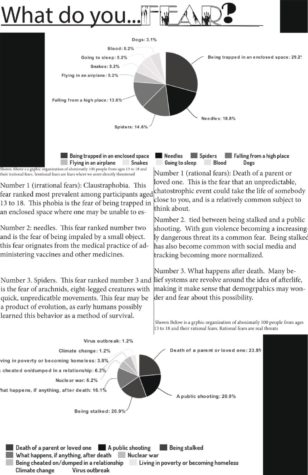The Doodle Factor
May 7, 2018
“I have ADD, so drawing while the class is doing a listening activity helps keep me from completely zoning out,” says senior Vanessa Burris. Burris is a social, active girl who enjoys drawing, listening to music, spending time outside, skiing, and occasionally passing a soccer ball around with a group of friends.
 Burris enjoys drawing as a pastime in the summer, but frequently spends time drawing in the school year because it helps her focus. Most people would think that doodling during class would take your attention away from school, but PBS says differently.
Burris enjoys drawing as a pastime in the summer, but frequently spends time drawing in the school year because it helps her focus. Most people would think that doodling during class would take your attention away from school, but PBS says differently.
According to pbs.org you should keep calm and doodle on, “interestingly, recent research has revealed that doodling may actually help the brain to process certain kinds of information. Furthermore, it is possible that encouraging students to doodle may actually increase their engagement and interest in educational subject matter” (Keep Calm and Doodle On, 2014).
The staff at PBS aren’t the only ones interested in the power of the doodle. The Wall Street journal also published an article about how drawing improves focus and memory: “Long dismissed as a waste of time, doodling is getting new respect. Recent research in neuroscience, psychology and design shows that doodling can help people stay focused, grasp new concepts and retain information. A blank page also can serve as an extended playing field for the brain, allowing people to revise and improve on creative thoughts and ideas. Doodles are spontaneous marks that can take many forms, from abstract patterns or designs to images of objects, landscapes, people or faces. Some people doodle by retracing words or letters, but doodling doesn’t include note-taking” (The Power of the Doodle, 2016).
So as it turns out, Burris’s “interesting quirk” might not be a quirk at all, but possibly a strategy being used to get better grades.

















